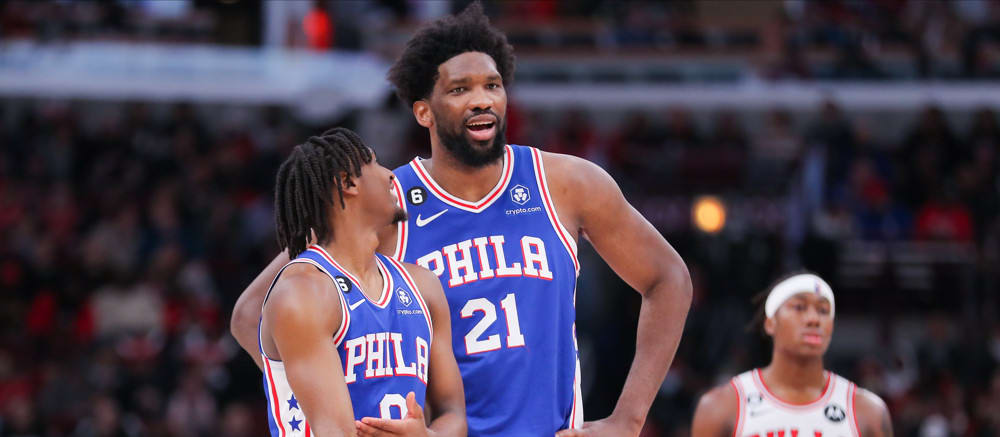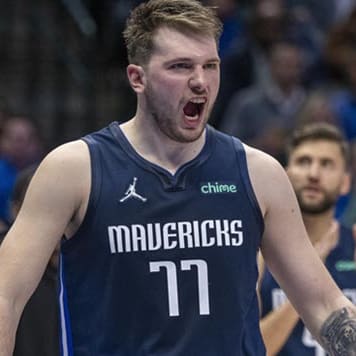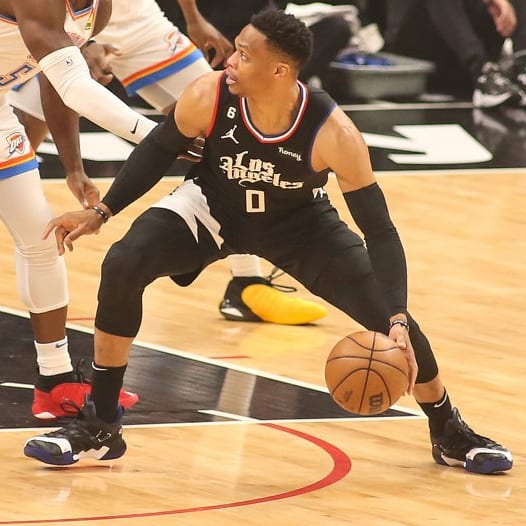This article is part of our NBA Draft Strategy series.
One of fantasy basketball's most popular formats is the points league. Unlike other formats, which divide statistics into categories, points leagues assign a specific value to each on-court action, offering a straightforward entry point for beginners and a strategic arena for veterans.
In this article, we will explore the fundamental principles that lead to success in points leagues, from player selection to in-season management. By the time you've finished reading, you'll be armed with the knowledge needed to dominate your fantasy basketball points league.
Points League Overview
Points formats are the most straightforward way to approach fantasy basketball. Managers more familiar with fantasy football generally find points leagues easier to jump into.
On Yahoo, stats are assigned the following point values:
Points: 1
Rebounds: 1.2
Assists: 1.5
Steals: 3
Blocks: 3
Turnovers: -1
Generally speaking, usage and minutes are the two main drivers of points league value. Specialists like pure three-point shooters don't get a bump as they do in category formats. On the other hand, low-efficiency players don't get downgraded in points leagues compared to category leagues.
Basic Draft Strategy
You can approach points leagues drafts in many ways, but they generally require less "spreadsheeting." You don't need to worry about punting or chasing specific categories and whether or not a player fits the mold of your build.
Simply thinking about players' upside in generalities can result in a strong points league draft. Getting a feel for how players generate fantasy points is a good idea, but once you
One of fantasy basketball's most popular formats is the points league. Unlike other formats, which divide statistics into categories, points leagues assign a specific value to each on-court action, offering a straightforward entry point for beginners and a strategic arena for veterans.
In this article, we will explore the fundamental principles that lead to success in points leagues, from player selection to in-season management. By the time you've finished reading, you'll be armed with the knowledge needed to dominate your fantasy basketball points league.
Points League Overview
Points formats are the most straightforward way to approach fantasy basketball. Managers more familiar with fantasy football generally find points leagues easier to jump into.
On Yahoo, stats are assigned the following point values:
Points: 1
Rebounds: 1.2
Assists: 1.5
Steals: 3
Blocks: 3
Turnovers: -1
Generally speaking, usage and minutes are the two main drivers of points league value. Specialists like pure three-point shooters don't get a bump as they do in category formats. On the other hand, low-efficiency players don't get downgraded in points leagues compared to category leagues.
Basic Draft Strategy
You can approach points leagues drafts in many ways, but they generally require less "spreadsheeting." You don't need to worry about punting or chasing specific categories and whether or not a player fits the mold of your build.
Simply thinking about players' upside in generalities can result in a strong points league draft. Getting a feel for how players generate fantasy points is a good idea, but once you have a basic understanding, it might be easier to draft with goals or benchmarks in mind.
And like any league, be aware of position requirements and eligibility. Standard Yahoo leagues have the following:
1 PG
1 SG
1 G
1 SF
1 PF
1 F
2 C
2 UTIL
3 BENCH
Yahoo's positions are more flexible than many other sites, but it's still important to note that managers must start two centers. Getting that position filled early saves a late-round scramble.
Tips
A points league draft flows much easier if you're thinking about player role rather than agonizing over a couple fantasy points here and there. For example, you can draft with the following in mind:
Rounds 1-2: Draft someone who can put up MVP numbers (45-55+ fantasy points)
Rounds 3-6: Draft players with All-Star/All-NBA potential (35-45 FP)
Rounds 7-10: Look for starters who are entrusted within the offense (30-35 FP)
Rounds 10+: Shoot for upside by targeting players with a high minutes floor or who produce excellent fantasy points per minute -- usually high-usage bench players or defensive specialists (potential for 25+ FP)
For rounds 10 and on, what constitutes "excellent fantasy points per minute"? Elite players are typically over 1.25 FP/min. RotoWire's projections for the upcoming season project just three players to exceed 1.5 FP/min -- Nikola Jokic (1.7), Giannis Antetokounmpo (1.6) and Joel Embiid (1.6). Great players, like Devin Booker (1.2) and Brandon Ingram (1.1), tend to range between 1-1.25 FP/min. Anything below 1 FP/M is somewhat concerning, with anything below 0.8 FP/min being a red flag. Players in the 0.8-1 FP/min range must consistently play 30-35 minutes to have relevance in points leagues. Players like this include De'Andre Hunter (0.8) and Jaden McDaniels (0.8).
Some players available in late rounds who project to have strong fantasy points per minute include Paul Reed (1.2), Christian Wood (1.2) and Naz Reid (1.2). It would mean a massive payoff for fantasy managers if those players were to be vaulted into more prominent roles for any reason.
Other tips are less specific to points leagues but important to consider.
First, position flexibility is valuable. A roster of players with multi-position eligibility allows you to maximize potential fantasy points in multiple ways. One instance is injuries. Injuries will inevitably occur, and having multi-position players lets you avoid situations where you can't fill a starting spot. Another instance is weekly games. You may have multiple players on your bench who have four-game weeks, but if positions are too inflexible, it may be challenging for you to maximize that advantage.
Second, prioritize players with scaleable usage. When teammates suffer injuries, not every player sees more touches. For example, if the Nets' Mikal Bridges suffers an injury, more responsibility falls to Spencer Dinwiddie, Cameron Johnson and Ben Simmons -- players who can create shots for themselves an others. Nic Claxton, despite his excellence as a shot-blocker and rebounder, probably won't see a sizeable boost in usage. There's a time and place to draft players like that -- typically traditional centers -- but beware that upside is limited.
Common Mistakes
The biggest mistake drafters make in points formats is not realizing how dramatically a lack of percentage stats changes fantasy value for some players. For example, RJ Barrett ranked outside the top 250 in 9-category per-game value last season. He shot just 43.4 FG% on 16.1 FGAs and 74.0 FT% on 5.4 FTAs, dragging down his value. However, he averaged 29.4 fantasy points, making him well worth a roster spot in even shallow points formats. Almost anyone averaging at least 20 PPG is worth rostering in points formats, while that's not the case in category formats.
Another mistake, though one not exclusive to points leagues, is not chasing upside with your final 1-3 picks. Players at the end of your bench are typically interchangeable throughout the season, whether for long-term adds or one-week streamers off the waiver wire. There will almost always be a player available for a given week with upside for 25 fantasy points per game, so you should aim higher with your final picks, even if they don't work out.










